This pattern imitates the look of three raffia ribbons woven together. I’ve made it in several color combinations, and they all look really nice. I am particularly fond of the results when I start with 3 very dark colors and blend them with white – the more contrast between the three main colors and the blending color, the more striking the depth effect. Feel free to substitute your own favorite colors.
This article was originally published in the Fall 2005 Issue of PolymerCAFE Magazine.
Supplies
Clay
- • One block Brown clay
- • One block Red clay
- • One block Green clay
- • Three blocks White clay
Step 1


Make a Skinner Blend jellyroll from the Brown and White. Repeat with Red and White followed by Green and White. Do not reduce.
Step 2


To imitate the look of woven raffia, I’ve adapted Donna Kato’s flower petal cane technique:
Stand the Brown cane on its end and slice it down the center, top to bottom. Turn the two pieces 90 degrees and repeat. This should give you four equal-sized wedges.
Step 3


Take one wedge and with your fingers, push the edges of the dark color up towards the light color.
Step 4


Flatten the wedge against your work surface so that it becomes rectangular. Repeat with each remaining wedge and then arrange them side-by side.
Step 5


Press together and reduce to form a rectangular cane with spikes of color.
Step 6


Reduce again, cut in half, and re-assemble so that there are 8 spikes. Repeat to make a cane with 16 spikes.
Step 7


Reduce the cane one last time, cut in half, but this time reassemble with the light areas touching so that the shaded sides are opposite each other and the highlight is in the middle.
Step 8


Further manipulate this cane so that the face is wide and short, with its width measuring exactly 3 times the height. Give the same treatment to the Red and Green jellyrolls. At this point, it might be helpful to refrigerate your 3 canes for a short while, particularly if they have gotten soft. Some firmness is necessary for the assembly and reduction process, if the design is to remain true.
Step 9


Cut the three rectangle canes into four sections so that you have 12 components. Take one Brown component and cut it at the two-thirds mark. Do the same to one Red component and two Green components.
Step 10


Assemble the components as shown, taking care to notice which direction the partial components are supposed to face. The “cut” sides should be facing out so that they may re-join neatly in the next step.
Step 11


Carefully reduce the cane until it is approximately 12 inches long. Cut off and discard any distorted ends and then cut the cane into four equal lengths. When you re-assemble the cane, be careful not to change the direction of any of the four lengths. They all need to be going in the same direction so that they line up nicely when re-assembled. You’ll want to see that the places where you had partial components are joined with their corresponding parts to make a whole.
Step 12


Reduce as before, until the cane is at least a foot long. Cut into equal quarters and reassemble as before, matching up partial components to make whole ones.
Step 13


Reduce this cane as well, but only until the “face” of it has reached about 1 ½ inches in width. This is your finished cane.
Variations/Final Thoughts
Use this pattern as a veneer on all kinds of fun things, from tube beads to miniature picture frames and covered pens!


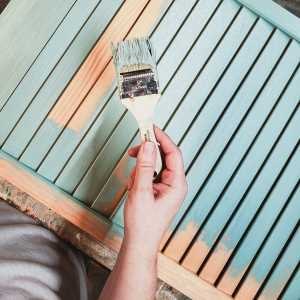


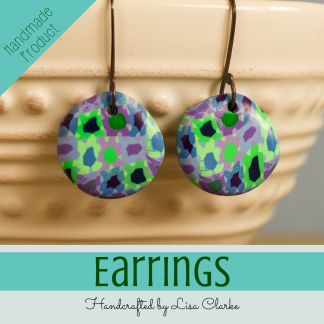
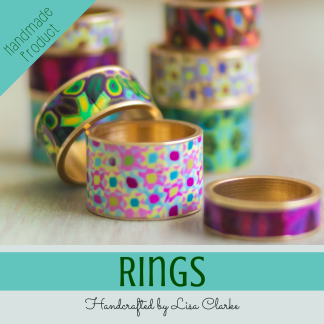


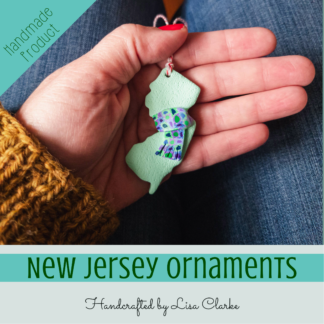
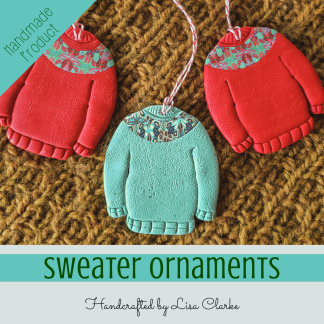

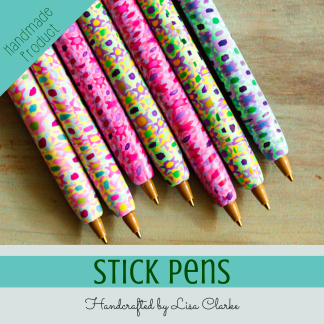
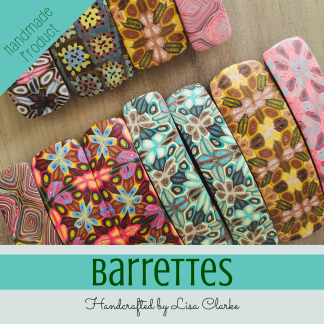
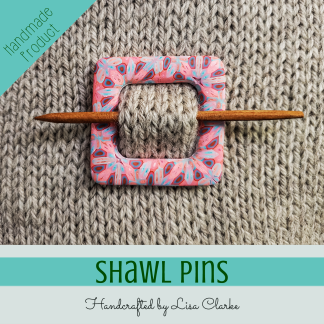
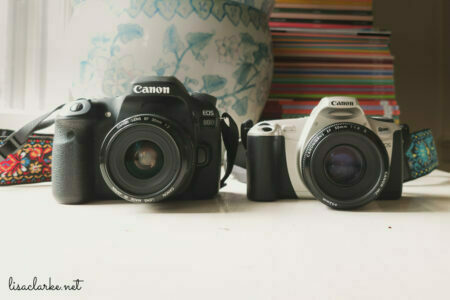













is blogging: The Weave Cane http://tinyurl.com/5v3p8p
[…] general craftyness and I am amazed at Lisa’s talent with polymer clay. I read through the Weave Cane tutorial yesterday with awe. I thought I had paience. Compared to that Lisa, this Lisa has no patience […]
[…] on how to make my woven pattern. You know how old content can get buried sometimes. So here is a link to the tutorial. It’s a complex cane, and it takes a bit of effort, but the effects are well worth it […]
Lovely tutorial! I have included it in my newsletter this week.
Thanks, Katie, that was nice of you!
Hi, I will try to explain What happens to me ’cause I don’t know too much english and will be errors on my writing. 😳 I Like projects with polymer clay. I bought recently some Sculpey clay to practice and the problem is that The clay glue to the tile and I can’t take it back without damaging the form unless the clay is damaged. It’s very soft. Help me, please!!!
Hi, Judith. Sculpey is a very soft clay – for that reason, many people don’t like to make canes with it. I actually like to cane with soft clay, so I’ve experienced what you are taking about. I have two suggestions:
1) if you have a sharp clay blade, you can slide it under the cane to release it from the tile.
2) put the tile with the cane on it in the refrigerator or freezer for a while – once it’s cold and the clay is less soft, you should be able to take it off of the tile without distorting it.
I hope this helps!
How about building the clay on waxed paper on the tile?
[…] This week’s cane for the 52 Weekly Cane Projects is a basket weave cane. You can get the tutorial for the basket weave cane here if you would like to try it yourself. This is not a tutorial, just a simple photo collage of some […]
Oh my gosh, if you stop at step 7 you have the perfect cane for book pages! just add a cover. Perfect, thanks!
Perfect! That’s a great idea 😊
Hi, there are no photos in this tutorial or the school spirit cane tutorial. Just thought you would like to know.
Oh! You are right! How weird. Thanks for letting me know! I’d better figure out how to fix that 🙂
All fixed!